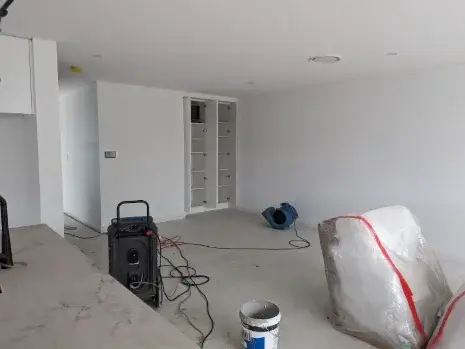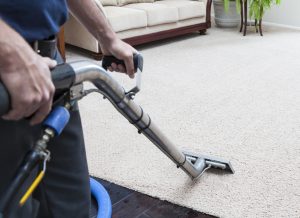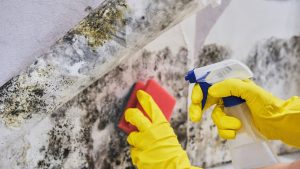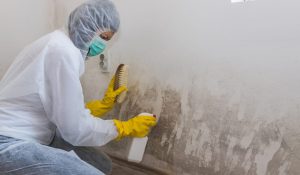
Mould can be a silent intruder in our homes, often growing unnoticed until it becomes a significant problem. In a city like Sydney, where humidity levels can be high, mould growth is not uncommon. The tropical climate, coupled with periods of heavy rainfall, creates a perfect breeding ground for mould, making it a prevalent issue for many households. Understanding how mould removal can improve indoor air quality and health is crucial for homeowners and tenants alike. This article delves into the importance of mould removal Sydney, the benefits of professional mould inspection, and how mould cleaning services can safeguard your health and home. It also provides insights into the steps involved in professional removal and preventive measures to keep your home mould-free.
Understanding Mould and Its Effects
Mould is a type of fungus that thrives in damp, humid environments. It reproduces by releasing tiny spores into the air, which can settle on surfaces and start new mould colonies if conditions are favorable. These spores can be inhaled, leading to various health issues, especially for individuals with allergies, asthma, or weakened immune systems. In addition to respiratory issues, exposure to mould can cause headaches, eye irritation, and fatigue. Common symptoms of mould exposure include coughing, sneezing, skin irritation, and in severe cases, respiratory issues. Long-term exposure to mould can also lead to more serious health concerns, such as chronic respiratory diseases and neurological problems.
How Mould Affects Indoor Air Quality
The presence of mould can significantly degrade indoor air quality. Mould spores, once airborne, can spread rapidly throughout your home, affecting every room. This widespread distribution of spores can make it difficult to control and eradicate mould without professional help. Poor indoor air quality can exacerbate existing health problems and contribute to new ones, affecting everyone from young children to the elderly. For those with respiratory conditions, mould can be particularly dangerous, leading to increased hospital visits and medication use. Moreover, mould can produce volatile organic compounds (VOCs) that contribute to indoor air pollution, further affecting health.
The Importance of Mould Removal in Sydney
Sydney’s climate, characterised by its humidity and occasional heavy rainfall, makes it a prime location for mould growth. The city’s coastal areas are particularly vulnerable, where saltwater and air moisture can accelerate mould growth in homes. Homes in coastal areas or those with inadequate ventilation are particularly susceptible, as stagnant air and excess moisture create ideal conditions for mould proliferation. Removal is essential not only for maintaining a healthy living environment but also for preserving the structural integrity of your home. Unchecked mould growth can damage walls, ceilings, and other structural components, leading to costly repairs and devaluation of property.
Benefits of Professional Mould Inspection
A professional mould inspection is the first step in combating mould issues. Trained inspectors can identify not only visible mould but also hidden growth that might be affecting your home. They use specialised equipment to detect moisture levels and pinpoint areas prone to mould growth. An inspection can prevent minor mould problems from escalating into major ones, saving you money and effort in the long run. Additionally, professional inspectors can provide tailored advice on addressing moisture issues and improving ventilation to prevent future mould growth. Their expertise ensures that all potential mould sources are identified and treated, providing peace of mind for homeowners.
Why Choose Mould Cleaning Services?
While some homeowners may opt for DIY removal methods, professional mould cleaning services offer several advantages:
- Thoroughness: Professionals ensure that mould is removed completely and does not return. They treat not just the visible mould but also the source of moisture, preventing future growth. This comprehensive approach is crucial for long-term mould prevention, as it addresses the root causes rather than just the symptoms.
- Safety: Handling mould can be dangerous without the right protective gear and knowledge. Professionals have the necessary equipment to protect themselves and ensure the safety of your household. They follow strict safety protocols to prevent cross-contamination and ensure that all mould is safely contained and removed.
- Expertise: Mould cleaning services have the expertise to deal with different types of mould and the best methods to eradicate them. Their experience allows them to quickly identify the most effective treatment methods, minimising disruption to your home and ensuring a thorough clean.
Steps in Professional Removal
Professional removal is a comprehensive process that includes several steps to ensure your home is mould-free.
Step 1: Assessment and Inspection
The process begins with a thorough assessment and inspection to identify the extent of the mould problem. Professionals will look for visible signs of mould and use tools to detect hidden growth and moisture. This initial step is crucial for developing an effective remediation plan, as it provides a clear picture of the problem’s scope and severity. Detailed reports from the inspection can guide homeowners on necessary actions and potential structural repairs.
Step 2: Containment
To prevent mould spores from spreading to unaffected areas, professionals will isolate the contaminated area. This step is crucial in ensuring the mould does not affect other parts of your home. Containment is achieved using physical barriers and negative air pressure to keep spores within the affected area. This meticulous approach helps protect the rest of the home and its occupants from exposure during the cleaning process.
Step 3: Filtration
High-efficiency air filters and vacuums are used to capture mould spores from the air, improving indoor air quality and ensuring that the spores do not resettle. This step is vital for eliminating airborne spores that can cause new mould growth and health issues. Filtration systems used by professionals are designed to capture even the smallest spores, ensuring a cleaner and safer indoor environment post-removal.
Step 4: Removal and Cleaning
Mould-infested materials, such as drywall or carpeting, may need to be removed. Professionals use specialised cleaning agents to clean and disinfect the affected areas. This step ensures that the mould is fully eradicated. The use of industry-grade cleaning solutions and equipment ensures that all mould traces are eliminated, preventing recurrence. Additionally, professionals can advise on replacing materials and improving home conditions to avoid future mould issues.
Step 5: Restoration
After removal, the final step is restoring your home to its original condition. This may involve repairs to drywall, painting, or other restoration work to ensure your home looks as good as new. Restoration not only improves aesthetics but also reinforces structural integrity compromised by mould. Professionals ensure that all repairs blend seamlessly with the existing structure, maintaining your home’s value and appearance.
Preventing Future Mould Growth
Prevention is key to maintaining a mould-free home. Here are some tips to prevent mould growth:
- Improve Ventilation: Ensure that areas prone to moisture, like bathrooms and kitchens, are well-ventilated. Use exhaust fans or open windows to reduce humidity levels. Regular maintenance of ventilation systems is also crucial to ensure they function effectively.
- Address Leaks Promptly: Repair any leaks in roofs, windows, or pipes immediately to prevent moisture buildup. Regularly check for signs of water damage or leaks, especially after heavy rain, to catch potential problems early.
- Use Dehumidifiers: In particularly humid areas, a dehumidifier can help maintain optimal humidity levels, reducing the risk of mould growth. Dehumidifiers can be particularly useful in basements or other enclosed spaces where moisture tends to accumulate.
- Regular Inspections: Regularly inspect your home for signs of mould, especially in areas that are often damp or humid. Early detection can prevent minor issues from escalating into major problems, saving time and money on repairs.
Conclusion
Mould removal is not just about maintaining a clean home; it’s about ensuring the health and safety of your household. By understanding the importance of mould inspection and opting for professional mould cleaning services, you can significantly improve indoor air quality and protect your family from potential health risks. Regular maintenance and preventive measures can keep your home mould-free, ensuring a safe and healthy living environment.
Remember, when it comes to mould, acting quickly is essential. Don’t wait for a minor problem to become a major issue. If you suspect mould in your home, reach out to a professional mould removal service in Sydney today. By taking prompt action, you not only safeguard your health but also preserve the value and comfort of your home, ensuring it remains a safe haven for years to come.



